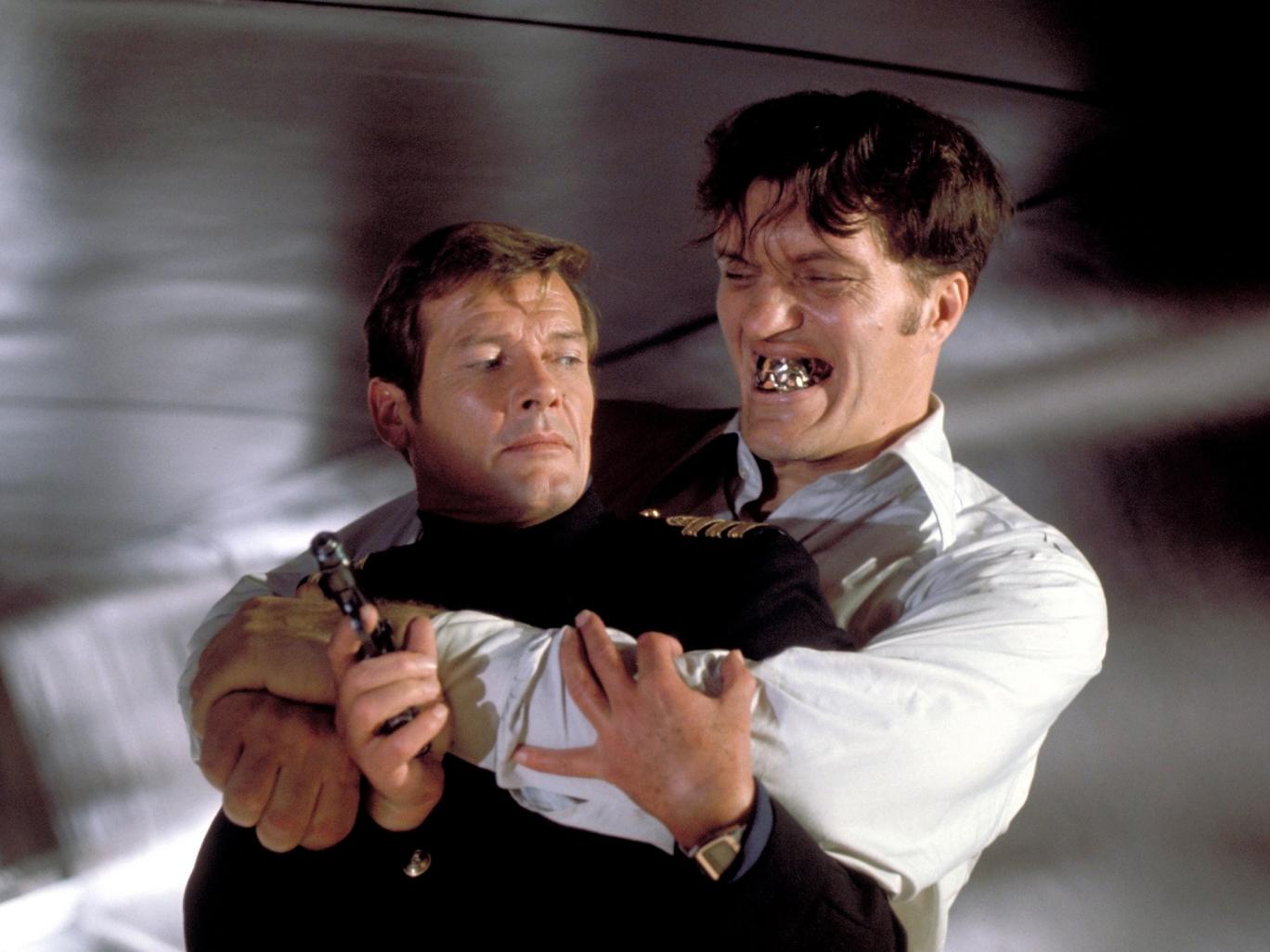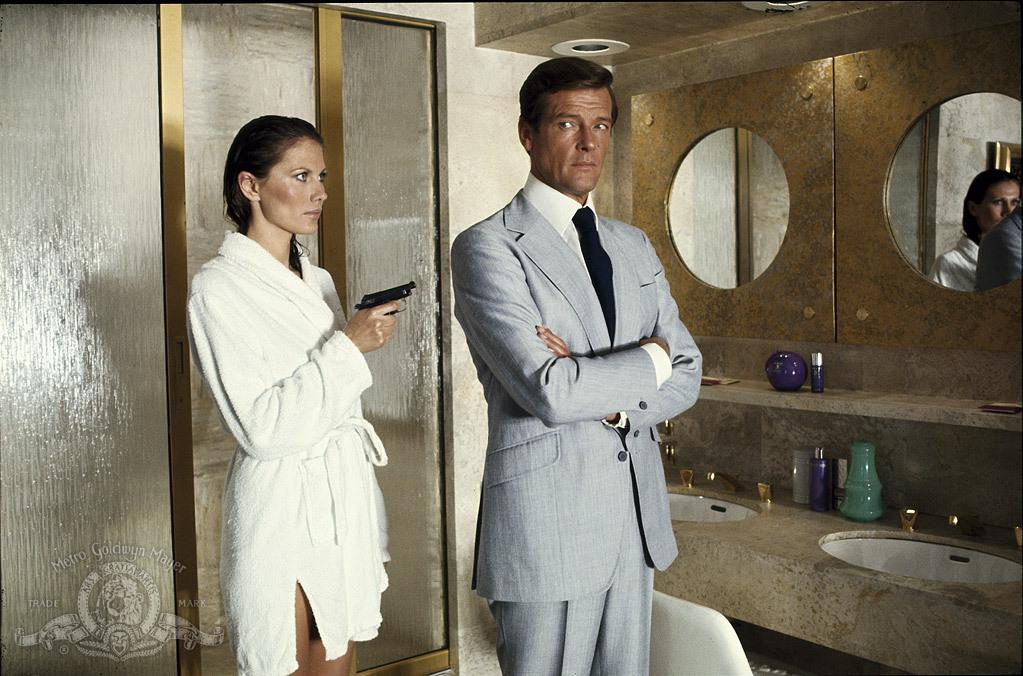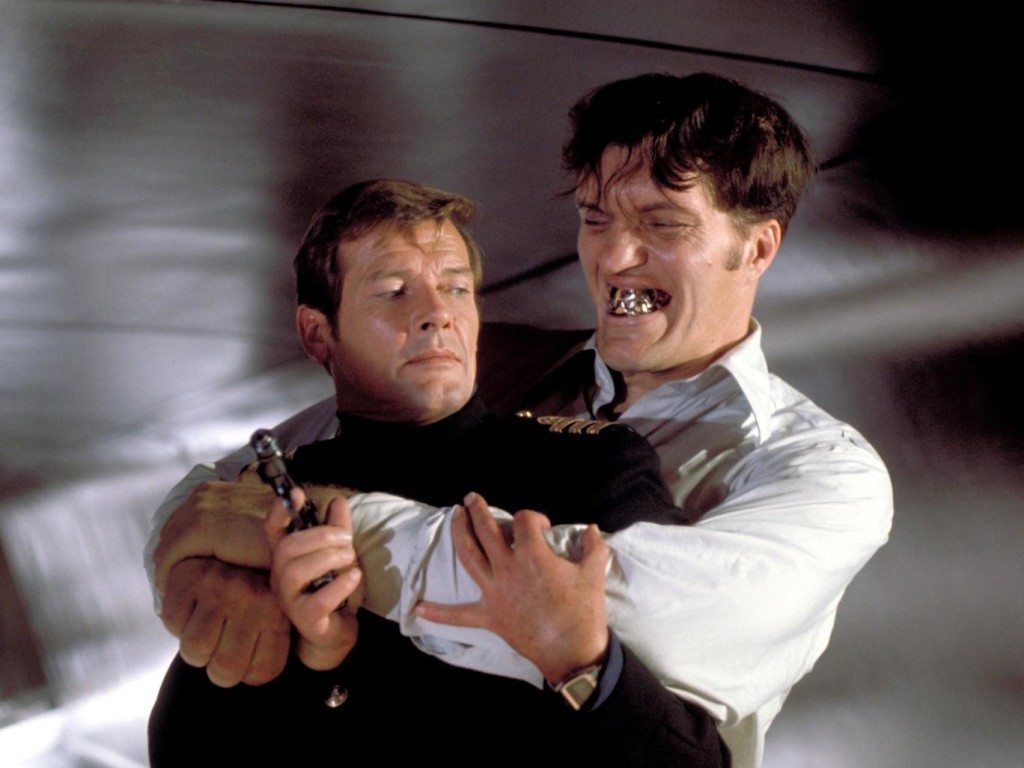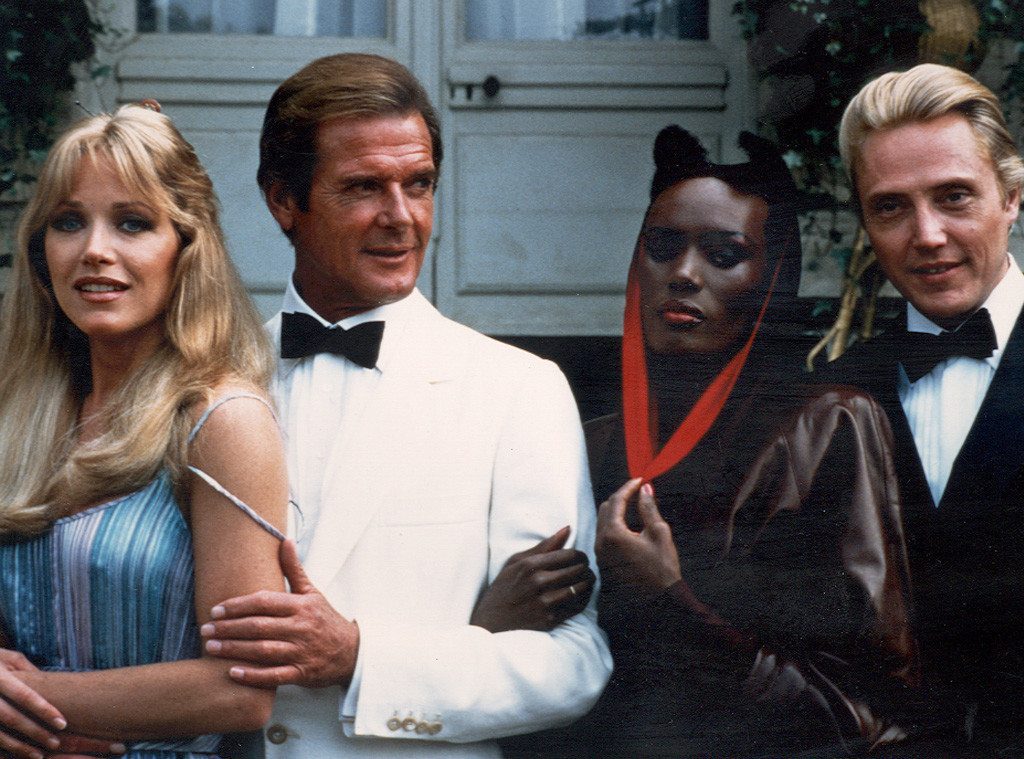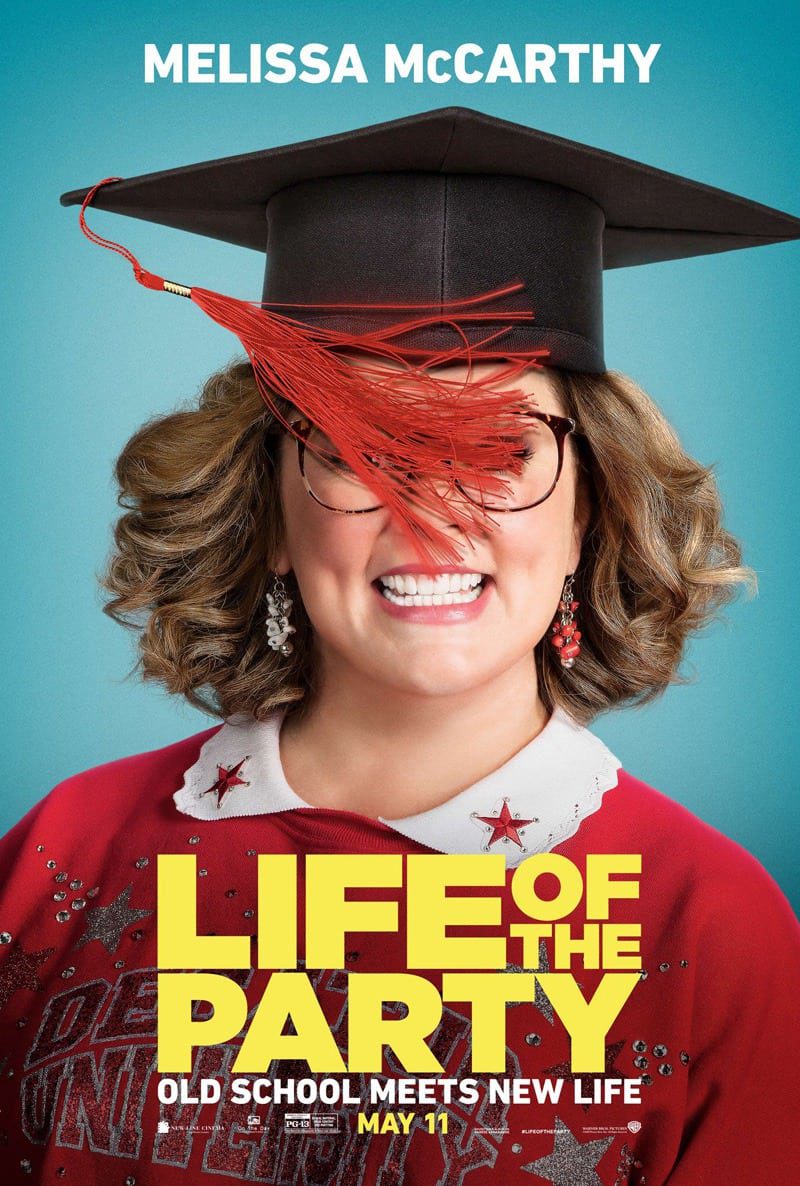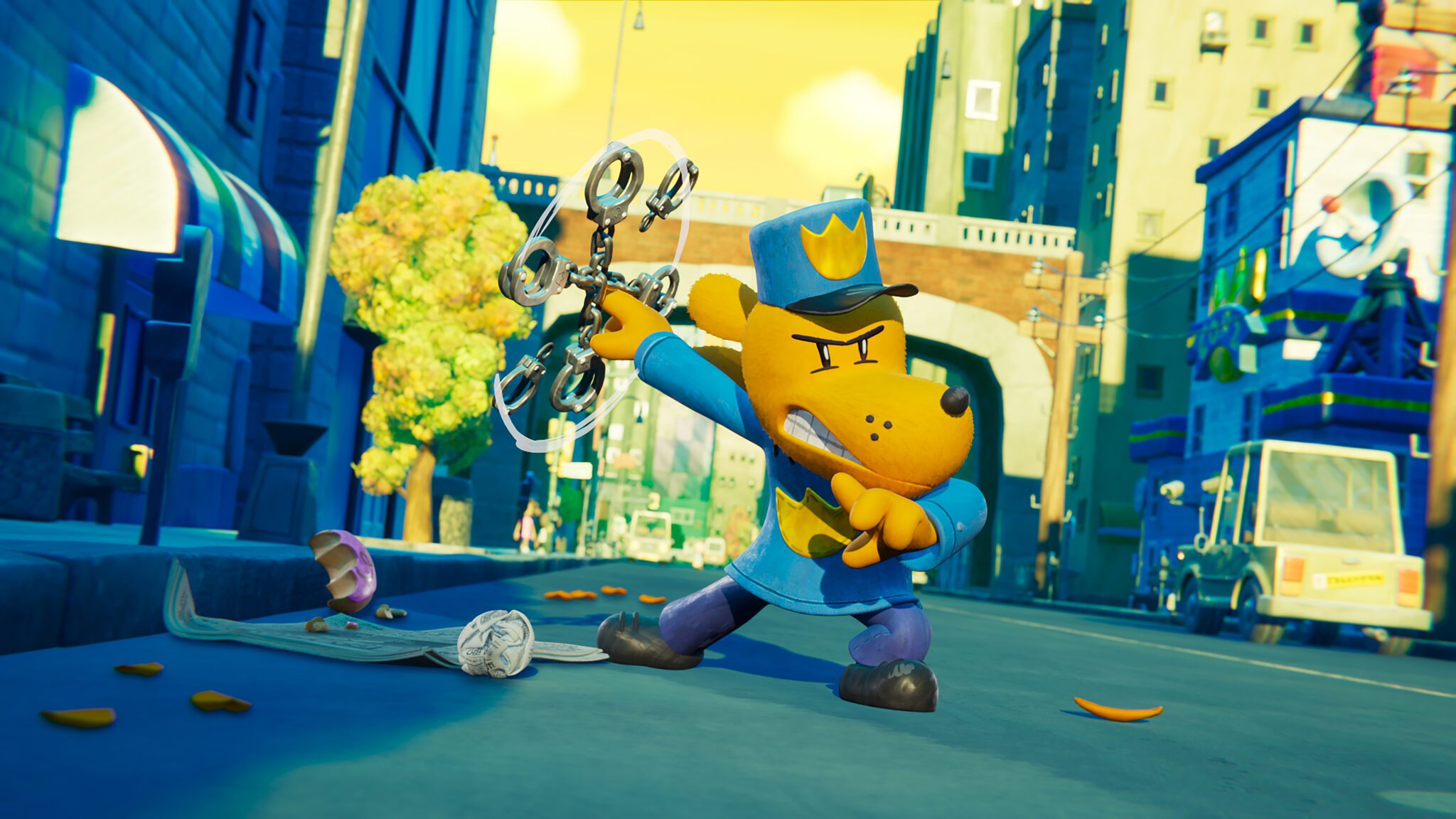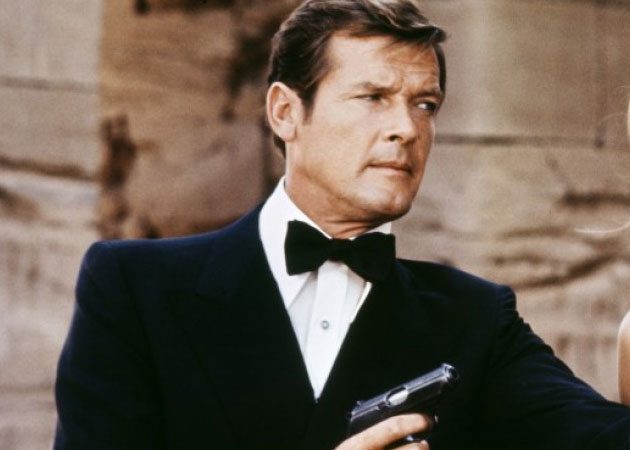 While it is sometimes easy to dismiss the goofiness of Roger Moore, I am reminded that his twelve-year, seven-film spin as the globe-trotting spy is actually second only to Connery?s in longevity and impact. But in all seriousness, the one-time Saint and Persuader filled the role with a rather campy take on the romantic and daring spy that none of the other Bonds have attempted to replicate, for a reason. From the blaxploitation beginnings in Live and Let Die?to the battle with Christopher Walken as a fifty-eight-year-old Bond in A View to a Kill, Moore brought his own take to the stories, making him famous for Bond, but not necessarily the most famous Bond.
While it is sometimes easy to dismiss the goofiness of Roger Moore, I am reminded that his twelve-year, seven-film spin as the globe-trotting spy is actually second only to Connery?s in longevity and impact. But in all seriousness, the one-time Saint and Persuader filled the role with a rather campy take on the romantic and daring spy that none of the other Bonds have attempted to replicate, for a reason. From the blaxploitation beginnings in Live and Let Die?to the battle with Christopher Walken as a fifty-eight-year-old Bond in A View to a Kill, Moore brought his own take to the stories, making him famous for Bond, but not necessarily the most famous Bond.
Live And Let Die (1973)
Bond is sent to investigate a murder at the United Nations, and becomes entangled with a mysterious Caribbean prime minister (Yaphet Kotto) and his psychic, Solitaire (Jane Seymour). He joins again with Leiter (this time, David Hedison) and MI6?s Rosie Carver (Gloria Hendry, the first African American Bond girl) as they tackle the voodoo priest, Baron Samedi (Geoffrey Holder), who ties the prime minister to the corrupt Mr. Big. There?s plenty of voodoo here to go around, and Bond?s seduction of Solitaire proves to be the cause of her losing her predictive abilities. All of that comes to be a cover for a poppy-growing operation that Bond destroys, complete with a ridiculous escape from a crocodile farm and a local sheriff (Clifton James) that causes more comedy than we?ve seen before in a Bond film. Clearly not Bond?s finest, but probably not the worst either, with the impact of American influences like The Dukes of Hazzard taken into account.
The Man With The Golden Gun (1974)
Starring Christopher Lee as master assassin Francisco Scaramanga, the film continued the major henchman model with Fantasy Island?s Herve Villechaize as Nick Nack, Scaramanga?s manservant. After discovering that he?s next on Scaramanga?s list for kills, Bond tracks him down through the golden bullets which the assassin uses for his major kills, using Scaramanga?s girlfriend, Andrea (Maud Adams, also Octopussy), to gain information before tracking a necessary invention through Asia. Moore?s constant tuxedo drew him attention in Harlem in the previous film, but in Thailand, he stands head and shoulders above everyone else. But the relationship with Andrea will reoccur, as she tells him that she knew Bond was the ?only man who could kill him? I?ve dreamed of you setting me free.?
The final battle with Scaramanga includes one of those ?we are the same? discussions where the assassin says he enjoys killing like a good artist but Bond rebuts that he only kills ?under specific orders of my government and those I kill are killers.? It?s one of the first times that the ethics of Bond really gets thrown out into the open, but we?re convinced that Bond (at least here) doesn?t kill for pleasure. His purposes are higher and more global, but the fact remains that he began hunting Scaramanga because he knew he was on the list, even if the end result is saving the world and stopping a killer.
The Spy Who Loved Me (1977)
Using some ideas that You Only Live Twice and Tomorrow Never Dies will repeat, evil millionaire Karl Stromberg (Curd Jurgens) exhibits a brutality that steps up the villainy of Bond?s opponent, bringing his henchman Jaws (Richard Kiel) along for the ride. A Russian spy, Anya Amasova (Barbara Bach), sets out to seduce Bond for revenge, and uses the romantic interludes to poke at his many romantic conquests, but he stops her before discussing his dead wife (showing some continuity with On Her Majesty?s Secret Service. The two of them pursue Stromberg?s water fortress Atlantis, where Stromberg states, ?this is the world; there is beauty, there is ugliness, there is death.?
Bond?s pursuit of Stromberg, who wants to accelerate mass destruction to create a whole new world, and his relationship with Amasova reflect more about his character than the goofy battles with Jaws. Stromberg?s methods border on the psychosis of some who have read The Book of Revelations or any other similar religious document and think they should play at being a god; by saving Amasova, who is sworn to kill him, Bond shows that his character rises above expectations tied to his role as spy.
The success of Star Wars is undeniable when reflecting on the emergence of this space age storyline that follows millionaire Sir Hugo Drax (Michael Lonsdale) and his quest to control space flight. Drax?s brutality is highlighted with a Doberman hunt that makes your skin crawl, but Bond?s partnership with Holly Goodhead (Lois Chiles) proves to be sufficient to lighten things up with the campy dialogue and innuendo. Drax?s plan, like Stromberg?s, involves annihilation of the known world so that it can be rebuilt, with his emphasis on a Noah?s ark concept where Drax gathers attractive people to repopulate the world (Adolph Hitler?s philosophies are comparable here). There is another battle with Jaws, a laser fight and, outside of the pompous conversations about a master race, this one is forgettable.
For Your Eyes Only (1981)
John Glen would direct the next four Bond films, but this one begins with another tie-in to the death of Teresa Bond and a return to Blofeld (initially). Soon, Bond is tracking organized crime boss Milos Columbo (Chaim Topol) and working with businessman Aristotle Kristatos (Julian Glover) in Italy. He befriends Melina Havelock (Carole Bouquet) who is after Columbo for revenge, and quotes the Chinese proverb about revenge requiring two graves (used most recently on ABC?s Revenge). Bond actually rebuffs the advances of Columbo?s skating prodigy (Lynn-Holly Johnson), who is thirty-one years younger, proving he doesn?t sleep with every woman on screen not named Moneypenny.
The pursuit of Columbo takes a turn which leads Bond and Melina to the abandoned monastery St. Cybils on a mountaintop that proves to be one of the better conclusions to a Bond movie as Bond leads an assault on enemy forces. The major point of emphasis here is that Bond prevents Melina from taking revenge, as there?s a dichotomy between what he will do for Queen and Country and what he thinks is appropriate for a citizen, however motivated. That?s certainly different from the track Bond will take later (see: Dalton, Craig) but for now, Bond continues to be a gentleman.
The same year that Connery starred in the unauthorized Never Say Never Again, Moore re-teamed with Adams in the tale of jewel smuggling and the circus, and remains one of my favorite Bond movies. There?s a backstory about a division in the U.S.S.R. thinking about dealing with the U.S. decadence and threat to the power that Russia then held; whether violence was necessary or not. But the main story follows Bond?s pursuit of Kamal Khan (Louis Jordan), who seeks a Faberge egg, and Bond?s involvement with the beautiful Octopussy. Unfortunately, while wildly entertaining in violence and action, the movie ultimately fails to add anything to the character of Bond.
A View To A Kill (1985)
The technology revolution of Silicon Valley invaded the Bond storyline as Bond battled eccentric tycoon Max Zorin (Christopher Walken), his henchwoman May Day (Grace Jones), and scientific mastermind Scarpine (Patrick Bachau). [An interesting tidbit: Dolph Lundgren served as a KGB bodyguard in the background of one scene.] But after chasing May Day from the Eiffel Tower, Bond tracks them to San Francisco, where Zorin plots to set off a double earthquake. The final sequence involves a blimp and the Golden Gate Bridge without getting as cheesy as you might?ve expected, before Moore disappears from the Bond legend.
In Conclusion
Moore set the standard for the debonair Bond that Brosnan sometimes followed and Craig seems capable of. But while Lazenby is panned by fans, Moore may be the ?worst Bond ever.? His personality doesn?t necessarily mesh well with Bond even if his looks did. But the Timothy Dalton years were a wild turn from the more fun-loving Bond that Moore presented to audiences for a dozen years. Was he static at times? Certainly. But his overall display of the warrior as governmental weapon, killing and sleeping around only as necessary, fulfilled at least some aspects of Ian Fleming?s vision of his ?blunt weapon.? Ultimately though, the character developed much more significantly under Brosnan and Craig, with Dalton a mere blip on the radar.

